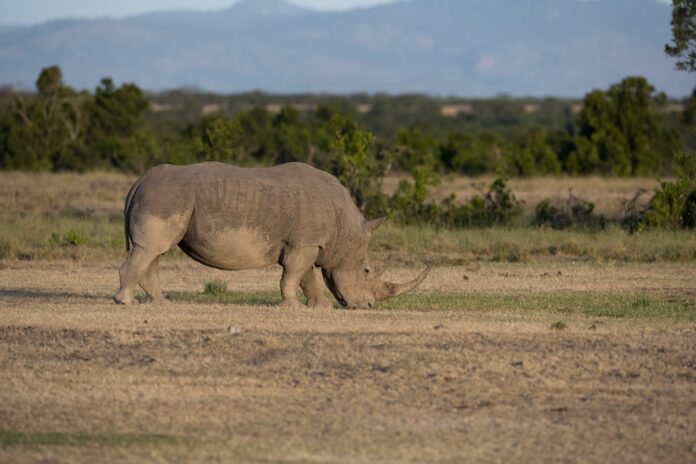Animal Death Prevents Ecological Meltdown
Did animals die before the Fall? Did they kill and eat each other or drop from disease and old age? While this emotive concept troubles many Christians, a recent ecological study from Venezuela can help calm the emotion and bring insight regarding God’s original plan.
Most Christians agree that no humans died before the Fall. Adam and Eve, as the first humans, rebelled against God in the Garden of Eden and thus brought on human death, both physical and spiritual. However, some Christians interpret the creation days of Genesis 1 as calendar days (24 hours in length) and maintain that no creatures died before the Fall. These people cannot envision how a loving God could declare his creation good, and yet allow the death of animals. Therefore, they blame Adam and Eve for all death as though their rebellion against God initiated predatory behavior as part of the curse.
Other Christians view the Genesis 1 creation days as long time periods and contend that animal death and carnivorous activity are part of God’s original creation. These Christians see predation and animal death as serving a good purpose and playing a necessary role in nature.
Science offers a unique perspective on this issue. Numerous scientific studies indicate that animal death and carnivorous activity keep ecosystems stable. One recent study uncovered a direct relationship between shrinking coyote population and increased extinction rate of scrub-breeding birds in Southern California coastal regions.1 Unlike most studies that uncover correlations between carnivore behavior and ecosystem health, a breakthrough from the Venezuelan field study allowed scientists to observe a direct cause-and-effect relationship. An international team of researchers were able to test, for the first time, two competing models—“top-down” versus “bottom-up”—for ecosystem regulation.2 A hydroelectric enterprise created a reservoir by flooding the Caroni Valley in Bolivar, Venezuela. The rising waters formed a number of islands that became the focus of ecological study. As it turned out, two of the islands formed without predators, whereas the other islands emerged with complete ecologies. The islands were too far apart to permit migration of species among them. This event provided the ecologists with a well-designed experiment, complete with controls. They could directly assess the role predators play in ecosystems’ stability.
Broadly defined, four major categories of organisms comprise ecosystems.3 Primary producers (plants), which convert sunlight and inorganic materials into biomass and stored chemical energy, form the ecosystem’s base. Primary consumers (herbivores) feed on plants. Carnivores, located at the ecosystem’s top level, consume the herbivores. And finally, decomposers convert the ecosystem’s detritus (remains) into inorganic materials used by the primary producers.
Ecosystem stability requires a means to regulate the levels of each category of organisms. The amount of sunlight, nutrients, moisture, and temperature regulates the abundance of primary producers. Herbivores also affect plant levels through consumption. If not checked, exploding herbivore numbers will cause an ecosystem to collapse by over-consuming the primary producers.
Ecologists debate the mechanisms that regulate herbivore levels. Some favor top-down regulation in which carnivores control herbivore numbers. Others advocate bottom-up regulation, in which altered foliage and plant defenses control herbivore levels.
Each of these two models for ecosystem regulation aligns with one of the two theological positions on animal death before the Fall. Top-down control of herbivore numbers would explain, in part, why God would have instituted carnivorous activity prior to the Fall. On the other hand, the theological model that espouses “no animal death before the Fall” would require a different means to regulate herbivore levels. Calendar-day creationists have suggested mechanisms similar to bottom-up ecosystem regulation as a way to control herbivore overpopulation in the absence of predation.4
Top-down ecosystem regulation predicts that carnivore loss should result in an explosion of herbivore numbers followed by ecosystem collapse. Bottom-up ecosystem regulation predicts stable ecosystems, whether carnivores are present or absent.
The research team found that over the course of several years, fauna measurements matched the predictions of the top-down model. Islands without predators manifest runaway herbivore populations. Changes in plants on these islands indicate that the islands’ ecologies will soon collapse.
These results demonstrate the critical role predation plays in ecosystem stability. Ecological meltdown occurs without carnivorous activity. This scientific insight reveals the greater good that undergirds animal death. It also shows that the theological position asserting “no animal death before the Fall” is scientifically untenable. Carnivorous activity is the key to ecosystem regulation and stability.
Endnotes
- Kevin R. Crooks and Michael E. Soule, “Mesopredator Release and Avifaunal Extinctions in a Fragmented System,” Nature 400 (1999), 563-66; Bernt-Erik Saether, “Top Dogs Maintain Diversity,” Nature 400 (1999), 510-11.
- John Terborgh et al., “Ecological Meltdown in Predator-Free Forest Fragments,” Science 294 (2001), 1923-26.
- Robert Leo Smith, Elements of Ecology and Field Biology (New York: Harper and Row, 1977), 47-71.
- Ken Ham, Jonathan Sarfati, and Carl Wieland, The Revised and Expanded Answers Book, Don Batten, ed. (Green Forest, AR: Master Books, 2000), 111.






